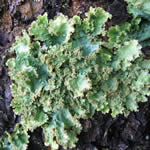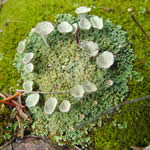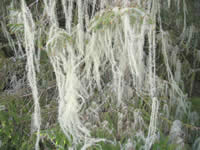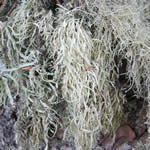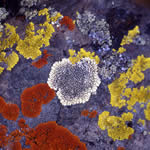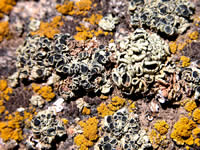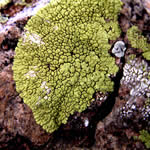USDA Forest Service Celebrating Wildflowers
|
|
|
 |
|
Lichen BiologyGrowth Forms
There are three main types of lichens:
Foliose LichensFoliose lichens have two easily distinguishable sides. In other words, there is a top side and there is a bottom side. They can be very flat, leafy like lettuce, or convoluted and full of ridges and bumps. Fruticose LichensFruticose lichens can be pendant and hair-like, upright and shrubby, or upright and cup-like. Many fruticose lichens have round branches that have a central core and others are hollow in the middle. Other fruticose lichens have flat branches that tangle up with each other.
Crustose LichensCrustose lichens are just that, crusts. They form a crust over a surface, like a boulder, the soil, a car, or your roof shingles. They can come in many bright, vibrant colors like sunny yellow, orange, and red, as well as grays and greens. Crustose lichens are pressed against their substrate. |
|
| NOTE: PDF format links require the Adobe Acrobat Reader to view. | |
| top | Disclaimers | FOIA | Privacy Policy | Quality of Information | Photo Credits & Use |
Location: http://www.fs.fed.us/wildflowers/interesting/lichens/biology/growthforms.shtml
Last modified: Tuesday, 24-Jun-2008 21:54:30 EDT
